Rising to 6,384 meters, Ausangate is Peru’s fifth-highest peak and a sacred giant in the Andes, honored as an Apu (protective spirit) and a premier trekking destination. Its shimmering glaciers, turquoise lakes like the Seven Lakes, and the legendary Apu Ausangate Trail offer a breathtaking blend of high-altitude adventure and living Andean culture. Best explored between May and September, this demanding trek requires solid acclimatization and gear for rapidly shifting mountain weather. Ready to conquer the altitude, immerse yourself in ancient traditions, and witness raw natural beauty? Ausangate is calling.
- What Is Ausangate Mountain?
- Mountaineering at Ausangate: What You Need to Know
- Hiking from Ausangate to the Rainbow Mountain (Vinicunca)
- Ausangate Hiking Trail Overview
- Biodiversity on the Ausangate Route:
- What to Explore and Experience on the Ausangate Route?
- The Spirit of Machu Picchu: Ausangate + Rainbow Mountain + Machu Picchu
- When Is the Best Time to Hike the Ausangate Trek?
- Weather Conditions on the Ausangate Trek
- Is the Ausangate Trek Difficult?
- How to Prepare for the Ausangate Trek?
- Essential Equipment for the Ausangate Trek?
- Conclusion:
- You might also like:
What Is Ausangate Mountain?
Towering 6,385 meters above sea level, Ausangate is the highest peak in the Cusco region and the fifth highest in Peru. Revered as an Apu, a sacred mountain since Inca times, it remains a powerful spiritual symbol for today’s Andean communities. With its striking glaciers and cultural significance, Ausangate is an iconic destination for adventure tourism and cultural heritage seekers.
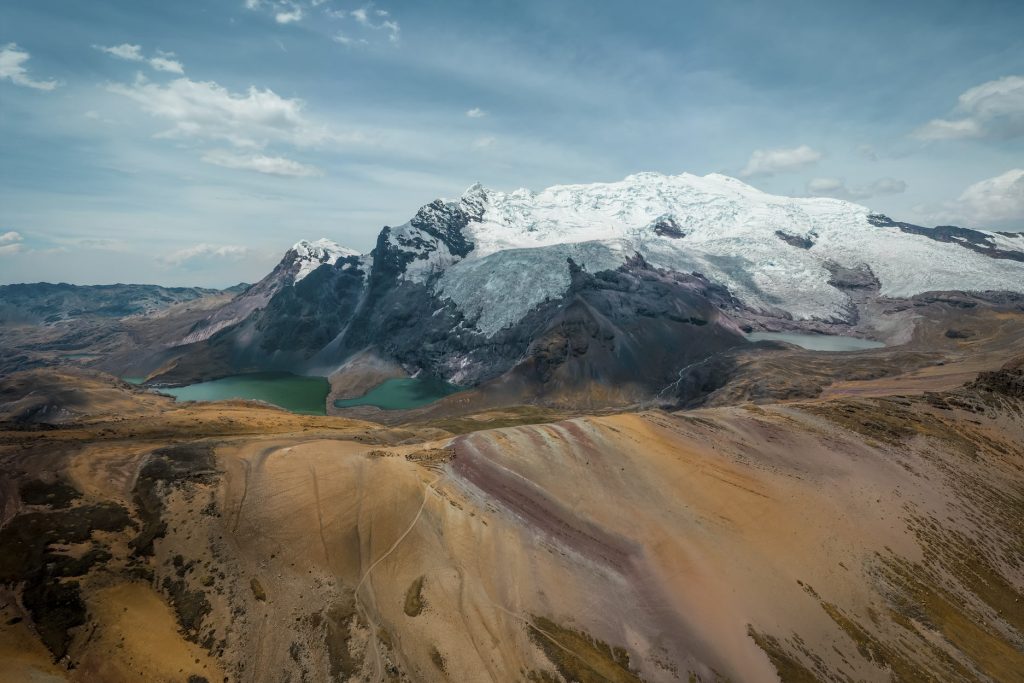
Where Is Ausangate Mountain Located?
Ausangate Mountain lies 100 km southeast of Cusco, in the Quispicanchi Province, within the majestic Vilcanota mountain range. Sacred to local communities like the Ausangate Runas herders who preserve ancient traditions, this iconic peak is not only the fifth-highest in Peru but often the most unforgettable for those who visit. Its remote beauty and cultural depth make it a top destination for trekkers seeking authenticity and awe-inspiring landscapes.
What Does Ausangate Mean?
“Ausangate” (6,372 m) comes from Quechua and means “Sacred Apu Who Rules” (Apu = deity; Sangate = the one who governs). It is the most revered mountain in Cusco and a spiritual axis of the Andes. For the Ausangate Runas local highland communities, this snow-capped giant is not just a mountain but a living being that protects its people, brings rain, and ensures the fertility of the land. Its sacred power is celebrated during Qoyllur Rit’i, the largest pilgrimage in the Andes, where thousands honor the Apus. As part of the Vilcanota range, Ausangate’s majestic silhouette stands as a symbol of Andean identity and a top destination for sustainable tourism in Peru, drawing travelers searching for adventure, living culture, and deep spiritual connection.
History of Ausangate Mountain
Ausangate (6,372 m), a sacred mountain in Peru, has been revered as an Apu, an Andean deity, since pre-Inca times by cultures like the Cuyos, who controlled trade routes between the Andes and the Amazon. During the Inca Empire, the mighty ruler Pachacútec incorporated Ausangate into the Tahuantinsuyo (the Inca’s Four Regions), establishing it as a vital spiritual and geopolitical center on the route to Antisuyo, the empire’s eastern frontier. After the Spanish conquest, local communities sought refuge in its highlands, preserving ancestral traditions like Qoyllur Rit’i, a fusion of Andean and Christian rituals. Today, Ausangate stands as a symbol of cultural resilience, a top destination for immersive tourism and trekking, where Andean herders continue their sacred bond with the land amid glaciers, turquoise lakes, and living traditions.
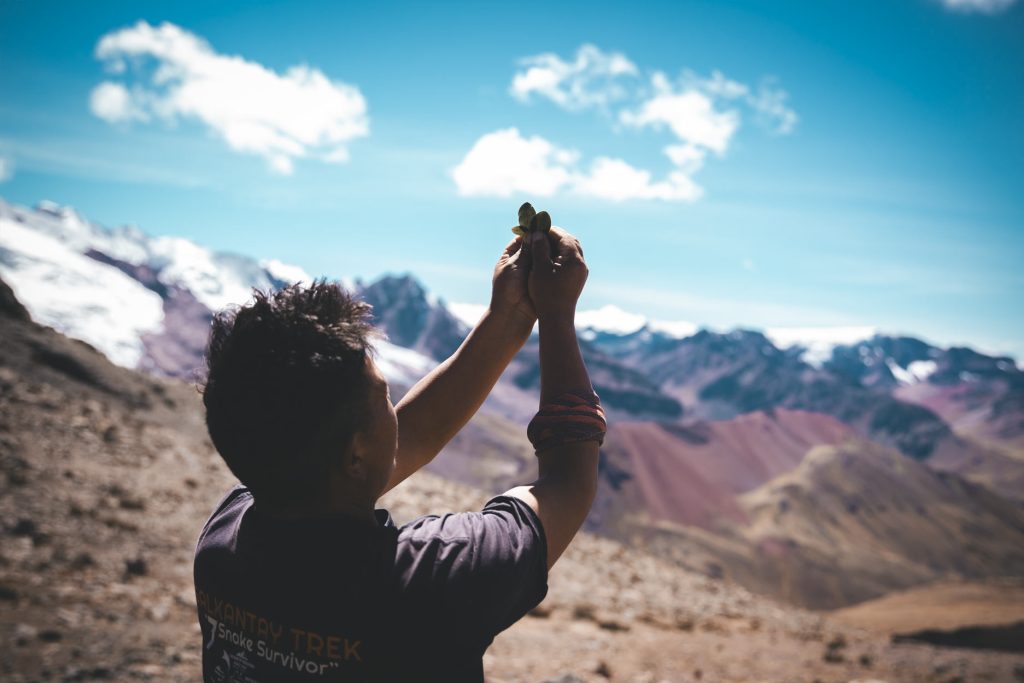
Key Facts About the Ausangate Glacier
- What is the height of the Ausangate Glacier?
The Ausangate Mountain stands 6,372 meters above sea level (m.a.s.l.). - How difficult is it to climb the Ausangate Glacier?
Using the French mountaineering scale, Ausangate is rated PD+/AD- (moderate to high technical difficulty, suited for experienced climbers). - When is the best time to climb it?
The dry season (May to September) is ideal as it offers clear days with less precipitation. - Is Ausangate the highest mountain in Peru?
No, Ausangate is the fifth-highest peak in Peru, though it is the highest in the Cusco region.
Ausangate in Inca Culture
Ausangate (6,372 m) was one of the most revered Apus in the Inca Empire, regarded as a guardian deity governing water, fertility, and the well-being of local communities. The Incas incorporated it into their worldview as the protector of the Antisuyo (the Amazonian region) and a focal point for ritual pilgrimages, establishing high-altitude sanctuaries and offerings, such as Qoyllur Rit’i, which blends Inca traditions with Catholicism. Its imposing presence symbolized the connection between Hanan Pacha (the upper world) and Kay Pacha (the earthly realm). At the same time, its glacial meltwaters fed the Wilcamayu (Vilcanota River), essential for the empire’s agriculture. Today, it remains a living symbol of cultural resistance and Andean spirituality.
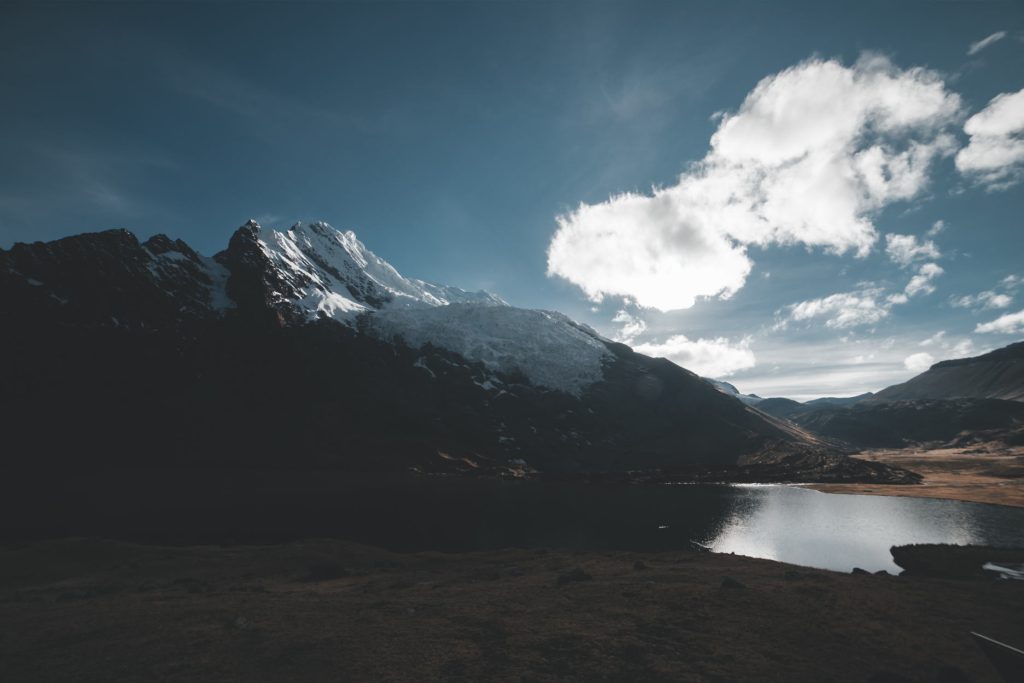
Mountaineering at Ausangate: What You Need to Know
Ausangate (6,372 m), the fifth-highest peak in Peru, presents an alpine challenge rated PD+/AD, requiring glacier experience, technical gear (crampons, ice axe, rope), and prior acclimatization (5+ days). Its principal routes, the North Face (40°-45°) and South Face (50°-60° with seracs), feature hidden crevasses and unpredictable weather conditions, making May to September the ideal climbing window. As a sacred Apu in Andean cosmology, you should ascend with certified guides (AGMP) and respect ceremonial sites deeply. The first successful ascent occurred in 1953 via the North Face.
Chronology of Mountaineering at Ausangate Glacier
Located in the heart of the Vilcanota Mountain Range in Cusco, Peru, the Ausangate Glacier has long been a challenging and captivating destination for high-altitude mountaineering enthusiasts. From the first attempts in the 1950s to the technical routes established in the 1980s, this majestic 6,384-meter peak has witnessed key milestones in the history of Andean mountaineering. Below is a chronology of the most significant expeditions cementing Ausangate’s legacy as one of the most iconic climbing destinations in the Peruvian Andes.
| Year | Expedition / Climbers | Route / Achievements | Key Details |
|---|---|---|---|
| 1950 | Piero Ghiglione (Italia), Bruno Manghi, M. Girando | First known attempts to summit Ausangate. | Two failed attempts. Ghiglione became a pioneer of mountaineering in the area. |
| 1952 | Piero Ghiglione (Italia), Anders Bolinder (Suecia), Mathias Rebitsch (Austria) | South Face Glacier. | Reached 6,000 meters, near the summit. Climbed one of the three prominent peaks, but not the highest. Later, we ascended a northwestern ice spire. |
| 1953 | AAV (Akademischer Alpenverein) de Múnich: Fritz März, Heinz Steinmetz, Jürgen Wellenkamp, Heinrich Harrer (Austria) | First successful ascent via the West Ridge. | Achieved multiple first ascents in the Vilcanota Range. The theft of technical equipment limited their journey. |
| 1966 | AAV Múnich: Rother, Engelmann, Kerner, Mayer, Schneider, Winkler, Oberhofer | Northwest Ridge and North Face. | The first simultaneous ascent will be via two routes to the Ausangate summit. |
| 1969 | Independent expedition | Opening of the Northeast Ridge. | Expansion of technical routes on the mountain. |
| 1976 | Independent expedition | Opening of the East Face. | Explored less-traveled glacial terrain on Ausangate. |
| 1980 | Independent expedition | Opening of the Southeast Spur | A highly technical and challenging route. |
| 1981 | Independent expedition | Opening of the Southeast Ridge | Continued technical exploration of the massif. |
| 1988 | Independent expedition | East Face – Southeast Ridge | Combination of advanced vertical routes. |
| Actualidad | International and local mountaineers | North Face (Normal Route) | The most popular and accessible route, chosen by most climbers today. |
Key Facts:
- Three successful ascents (1953-1980).
- The latest major challenge on Ausangate is not just about conquering new routes but also about doing so with a technical, ethical, and sustainable approach on a mountain that is rapidly changing due to global warming.
- In May 2023, Japanese climbers Yudai Suzuki and Kei Narita achieved the first ascent of the north face of Ausangate. They completed the route in five days, facing harsh conditions at high altitude, including overhanging ice and deep snow.
Hiking from Ausangate to the Rainbow Mountain (Vinicunca)
The Ausangate Trek to Rainbow Mountain is a unique adventure, featuring a 4-day, 3-night hike from Ausangate to the stunning Rainbow Mountain in the Vilcanota mountain range, Peru. This exclusive experience will take you through majestic landscapes of glaciers, turquoise lagoons, and picturesque Andean communities. Face a moderate to challenging trek as you reach altitudes of up to 5,100 meters (16,732 feet) in a small group of up to 12 people. Along the way, you’ll discover the sacred Ausangate Mountain, revered by the ancient inhabitants of the Andes, and conclude your journey at the world-renowned Rainbow Mountain (Vinicunca), famous for its vibrant colors. Immerse yourself in nature, away from the tourist crowds, and enjoy a one-of-a-kind experience while spotting local wildlife such as vicuñas and condors. Additionally, with a focus on quality and comfort, we take care of all the details so you can focus solely on enjoying the adventure.
Ausangate Hiking Trail Overview
The Ausangate Route in the Andes of Cusco is a dream trekking adventure that blends glacier landscapes, turquoise lagoons, and vibrant culture. Circling the sacred Nevado Ausangate (6,384 meters above sea level), this circuit offers breathtaking sights such as the Sibinacocha Lagoon, the Upis hot springs, the iconic Rainbow Mountain (Vinicunca), and the challenging Palomani Pass (5,200 meters above sea level). With Andean communities, abundant wildlife, and ancestral traditions, this adventure is perfect for those seeking untamed nature and authenticity in Peru.
Key Details:
- Highest Point: Palomani Pass (5,200 meters)
- Distance: Approximately 70 to 100 km.
- Dificultad: Camping trek, often with the support of muleteers and horses.
- Altitude:
- Highest Point: Paso Palomani (5,200 m).
- Lowest Point: Tinki Village (4,200 meters).
- Main Attractions:
- Ausangate Mountain
- Sibinacocha Lagoon
- Rainbow Mountain
This route combines high Andean landscapes, colorful lagoons, vibrant culture, and physical challenges.
Biodiversity on the Ausangate Route:
The Ausangate Route, located in the high Andes of Cusco, is home to unique biodiversity adapted to extreme altitude conditions (between 4,000 and 6,384 meters above sea level). Its ecosystem includes:
Representative Fauna of the Ausangate Route.
The Ausangate Route, nestled in the heart of the Peruvian Andes, harbors a diverse and unique array of wildlife, making it an ideal destination for nature enthusiasts and ecotourism. Amidst its imposing mountains and turquoise lagoons, iconic species thrive. This route, known for its high ecological value, attracts travelers and scientists alike due to its biodiversity and wildlife viewing opportunities.
- Mammals
- Andean Camelids: Llama (Lama glama) and Alpaca (Vicugna pacos): Domesticated thousands of years ago, these species are vital to the local economy and culture.
- Vicuña (Vicugna vicugna) and Guanaco (Lama guanicoe): Wild species protected for their fine wool.
- Other Mammals:
- Spectacled Bear (Tremarctos ornatus): Revered as a sacred symbol in Andean cultures, this bear is now endangered primarily due to habitat loss.
- Taruca (Hippocamelus antisense) is an Andean deer species threatened by hunting and livestock expansion into its habitat.
- Puma (Puma concolor): Puma was a revered feline in Inca cosmology, symbolizing power and strength.
- Vizcacha (Lagidium viscacia): A rodent adapted to rocky areas.
- Birds
- The Andean Condor (Vultur gryphus), a sacred bird in many indigenous cultures, is now endangered due to habitat loss and poisoning.
- The Giant Hummingbird (Patagona gigas) is the largest hummingbird species in the world. It is known for its territorial and aggressive behavior.
- Torrent Duck (Merganetta armata): Found in mountain rivers, with striking plumage.
- Huallata (Chloephaga melanoptera) is an Andean goose species native to wetland habitats.
- Other Birds include: Mountain caracara, puna hawk, and ash-breasted cowbird, among others.

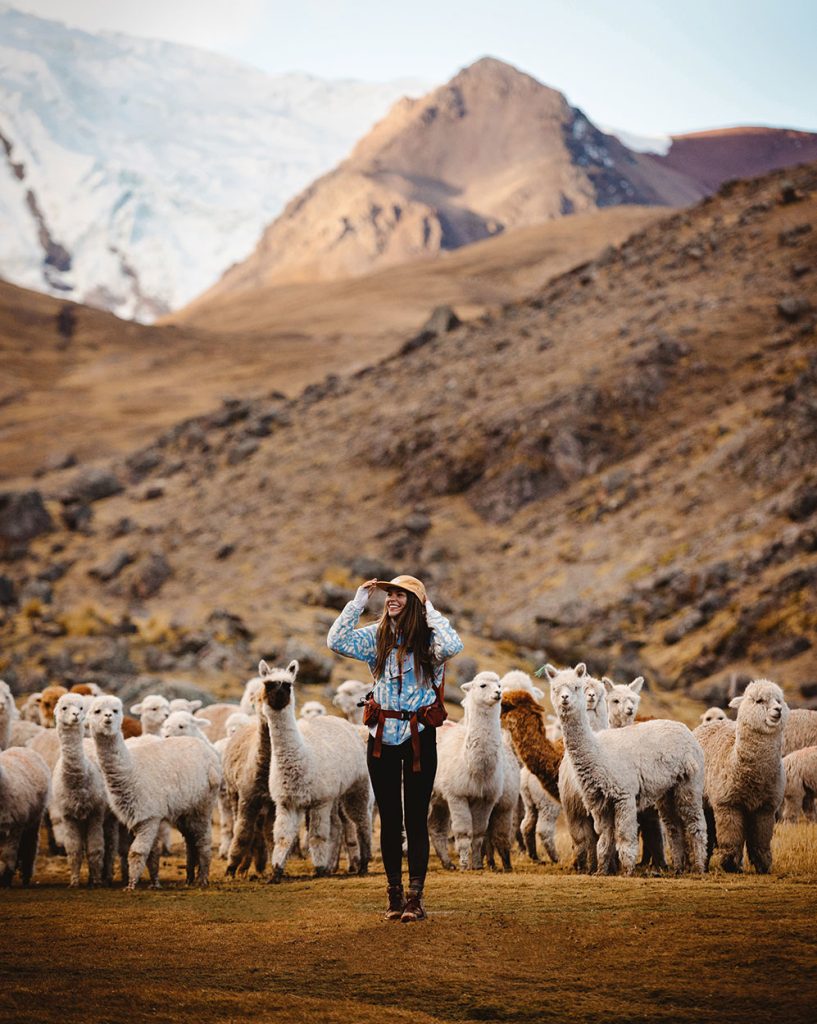
Notable Flora of the Ausangate Route
The Ausangate Route, located in the Peruvian Andes, is home to a unique flora adapted to extreme altitudes, with native species such as Andean ichu grass, ancient yareta, lichens, mosses, and high-altitude wildflowers like gentians and Andean orchids. These fragile ecosystems, situated between 3,800 and 5,200 meters above sea level, are renowned for their biodiversity, natural beauty, and vital role in environmental conservation.
- Featured Flora
- Queuña (Polylepis spp.) thrives at extreme altitudes up to 4,500 meters and plays a vital role in climate regulation and soil conservation.
- Pisonay (Erythrina edulis), recognized by its leafy canopy and vibrant red flowers, was historically cultivated by the Incas for its edible fruits and medicinal uses.
- Chachacomo (Escallonia resinosa) has been used centuries to dye fabrics and make traditional farming tools.
- Aliso (Alnus jorullensis) helps improve crop growth by providing filtered sunlight.
- Molle (Schinus molle) is known for its medicinal uses, such as its anti-inflammatory and insecticidal properties, and its culinary applications as a pepper substitute.
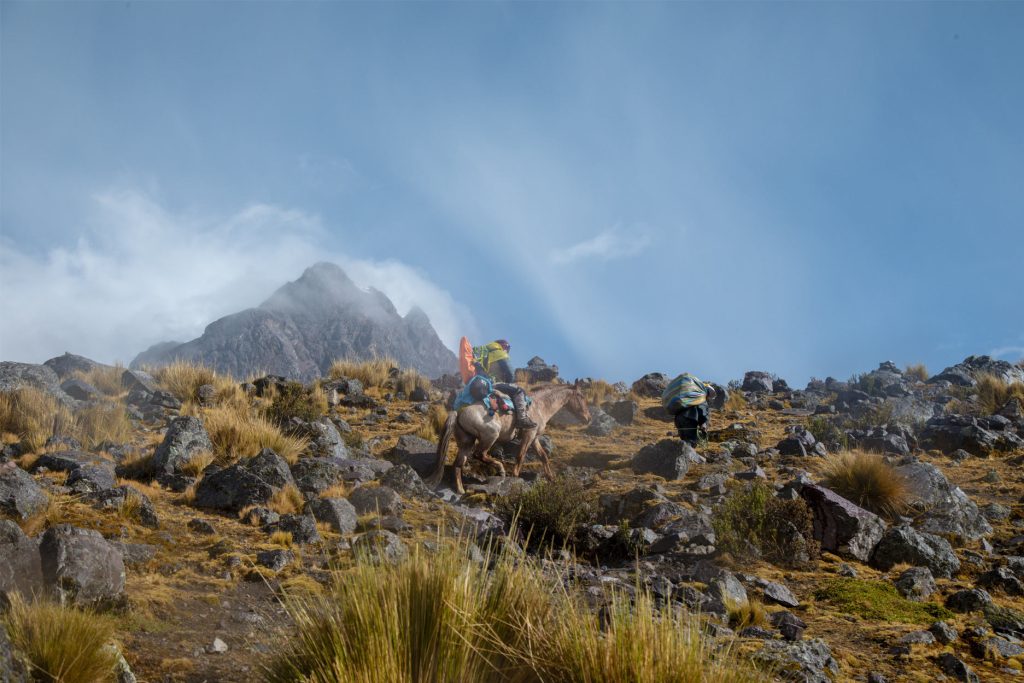
Why It’s Conservation Matters
Conserving the Ausangate Route is not just about saving animals or plants; it’s about protecting a natural and cultural legacy that sustains life in the Andes. Losing it would impact water, food, traditions, and the economy of thousands of people while also impoverishing the planet. It is both an ethical responsibility and a practical necessity.
Key Fact: Peru is home to 70% of the world’s tropical glaciers, and Ausangate is one of them. Its conservation is urgent to prevent future droughts.
Tips for Responsible Wildlife Viewing on the Ausangate Route
When engaging in responsible wildlife viewing on the Ausangate Route (or any natural environment), it is essential to prioritize animal welfare, respect for the ecosystem, and personal safety.
- Maintain a Safe Distance.
- Avoid Direct Contact.
- Speak softly and Move Slowly: Keep your voice low and your movements gradual. Wear neutral-colored clothing to blend into the environment.
- Respect Natural Timing: Early mornings and evenings are the best times for wildlife viewing. Avoid using flashlights at night, as this disrupts nocturnal life cycles.
- Do Not Use Drones: The noise from drones can scare birds and lead them to abandon their nests or feeding areas.
- Stick to Trails: Stay on marked paths to avoid damaging the flora.
- Leave No Trash Behind: Always carry out any waste, keeping the environment pristine.
- Use Recommended Gear, such as a camera with a zoom lens, to avoid getting too close (and never use a flash).
- Do Not Interfere with Natural Behaviors: Observe wildlife during activities like hunting or mating without disturbing them. For example, if you see a fox hunting vicuñas, do not scare it away.
- Choose Certified Guides: Hire operators who follow sustainable tourism practices and understand wildlife patterns without disturbing them.
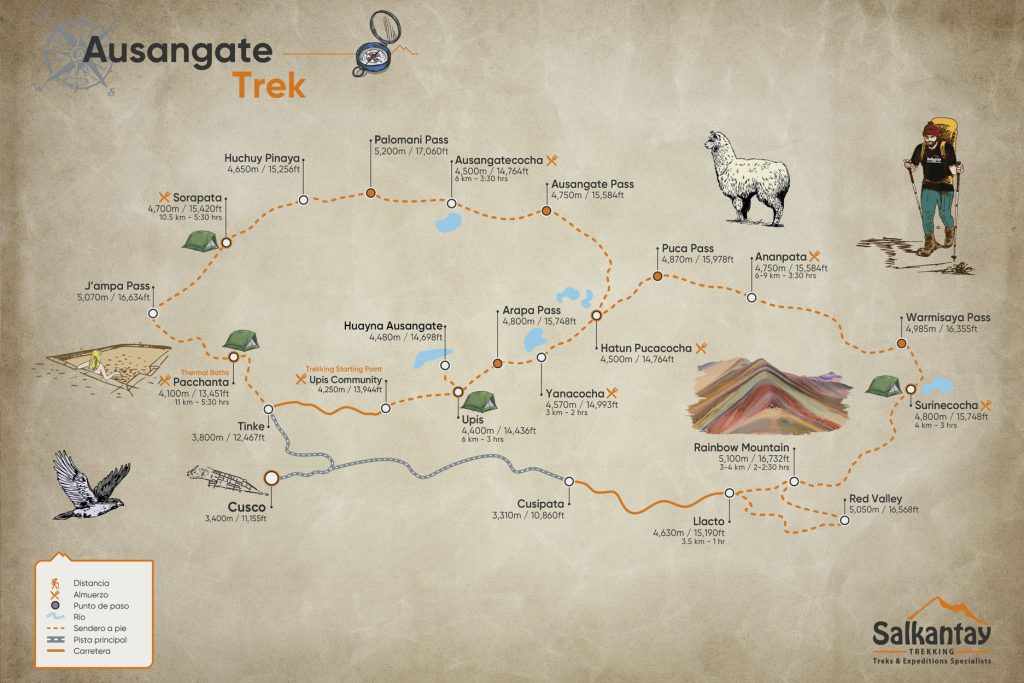
Options for Exploring the Ausangate Trail
Discover the most breathtaking treks in the Peruvian Andes, where the majestic Ausangate (6,372 meters) and the iconic Rainbow Mountain await, offering surreal landscapes, turquoise lagoons, and ancient cultures. From short 1-day adventures to epic 7-day expeditions, our routes provide unique experiences for all travelers, whether conquering sacred peaks, exploring multicolored valleys, or connecting with Quechua communities. Perfect for nature lovers, photographers, and adventurers, these hikes blend challenge, scenic beauty, and authenticity, far from mass tourism crowds.
| N° | Trek Type | Duration | Description | |
|---|---|---|---|---|
| 1 | Ausangate and Rainbow Mountain Trek 3 Days | 3 days / 2 nights | Embark on an unforgettable 3-day trek to Ausangate and Rainbow Mountain, one of the most spectacular hiking routes in the world. Explore breathtaking Andean landscapes, from turquoise lagoons to the famous Vinicunca, while traversing trails surrounded by pristine nature and traditional culture. Perfect for adventurous travelers whether solo, with a partner, or in a group, this trek blends challenge, scenic beauty, and unique moments under the Andean sky. | |
| 2 | The Classic Ausangate Trek | 5 days / 4 nights | For trekking and nature enthusiasts, the hike to Ausangate offers the ultimate experience in Cusco. It guides you through surreal landscapes toward the most significant glacier in southern Peru: the majestic Ausangate (6,372 meters / 20,905 feet). This epic route combines adventure, Andean culture, and panoramic views of snow-capped mountains, turquoise lagoons, and unique wildlife, making it one of the best hikes in the world. | |
| 3 | Ausangate Trek to Rainbow Mountain 4 Days | 4 days / 3 nights | Ausangate & Montaña Arcoíris: Epic Trek in the Peruvian AndesEscape the crowds, conquer surreal landscapes (5,000+ meters above sea level), and connect with Quechua cultures. Best explored during the dry season (April to November). | |
| 4 | Ausangate, Rainbow Mountain, & Red Valley | 2 days / 1 night | If you’re looking for short, adventure-filled getaways from Cusco, our 2-day tour to Rainbow Mountain (Vinicunca) and the Red Valley will take you to surreal landscapes that seem straight out of a dream. With an expert guide, you’ll explore the stunning geological formation of Rainbow Mountain, where vibrant colors will leave you breathless, and the enigmatic Red Valley, a Martian-like landscape in the heart of the Andes. Perfect for travelers seeking unique and off-the-beaten-path experiences, this tour combines pristine nature, spectacular photography opportunities, and Andean culture. | |
| 5 | The Ausangate 7 Lakes Hike | 1 day | Experience the magic of the Andes with this trek to the 7 Vilcanota Lagoons, where the majestic Ausangate (6,384 meters) guards turquoise and emerald lagoons in a dreamlike landscape. Perfect for nature lovers and photographers, this journey showcases the best of the Vilcanota Mountain Range in a day full of adventure and a deep connection with Pachamama. | |
| 6 | Machu Picchu, Ausangate and Rainbow Mountain. | 7 days / 6 nights | Discover the highlights of Cusco in one unforgettable journey: Machu Picchu, the Sacred Valley, Rainbow Mountain, Ausangate, and a City Tour. Our all-inclusive 7-day package offers a perfectly planned experience with expert guides, transportation, and accommodation. | |
| 7 | Ausangate & Sibinacocha Lagoon | 7 days / 6 nights | Discover a unique version of the Ausangate trek (6,372 meters) along less-traveled trails. You’ll engage with Andean communities, enjoy hot springs, and admire crystal-clear lagoons with views of the sacred glacier. The highlight: the magical Sibinacocha Lagoon, a tranquil haven perfect for connecting with nature. This trek is ideal for travelers seeking authentic experiences away from mass tourism. | |
*The distance of the route may vary depending on the itinerary and the selected agency.
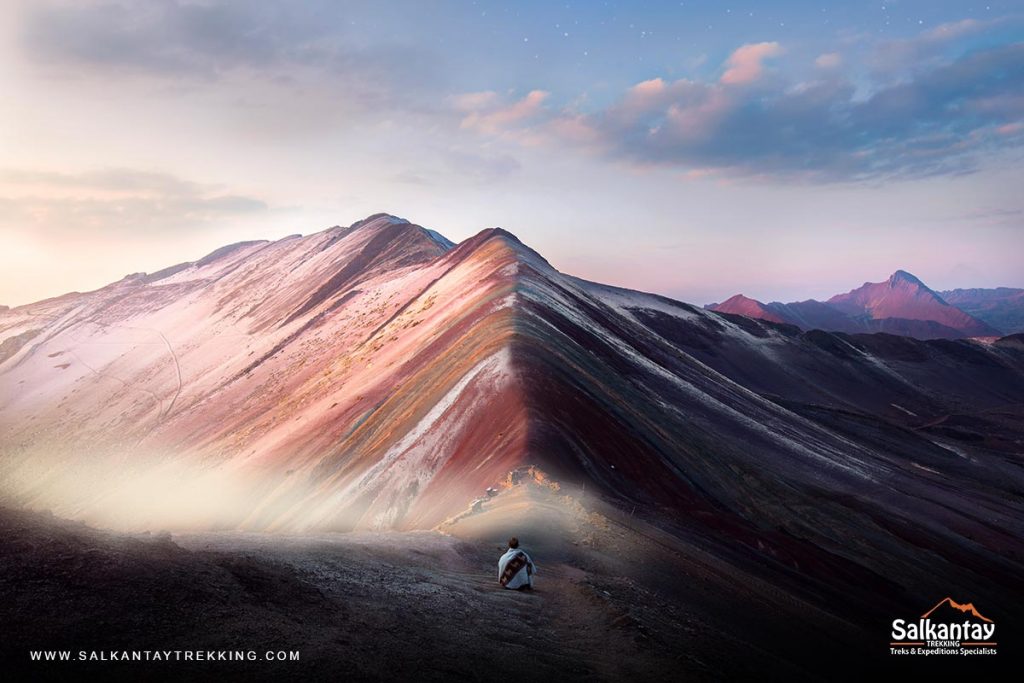
What to Explore and Experience on the Ausangate Route?
Upis Community
Located at over 4,300 meters above sea level on the slopes of the sacred Ausangate Glacier (Cusco, Peru), the Upis community is a key destination for experiential tourism. The community offers lodging, meals, and handcrafted goods, making it a perfect spot for trekking and connecting with Quechua culture. Its inhabitants, guardians of ancestral traditions, provide unique experiences such as natural hot springs, high-altitude farming, and rituals dedicated to the Apus (sacred mountains). Upis also serves as the starting point for the famous Ausangate trek and the route to Vinicunca (Rainbow Mountain).
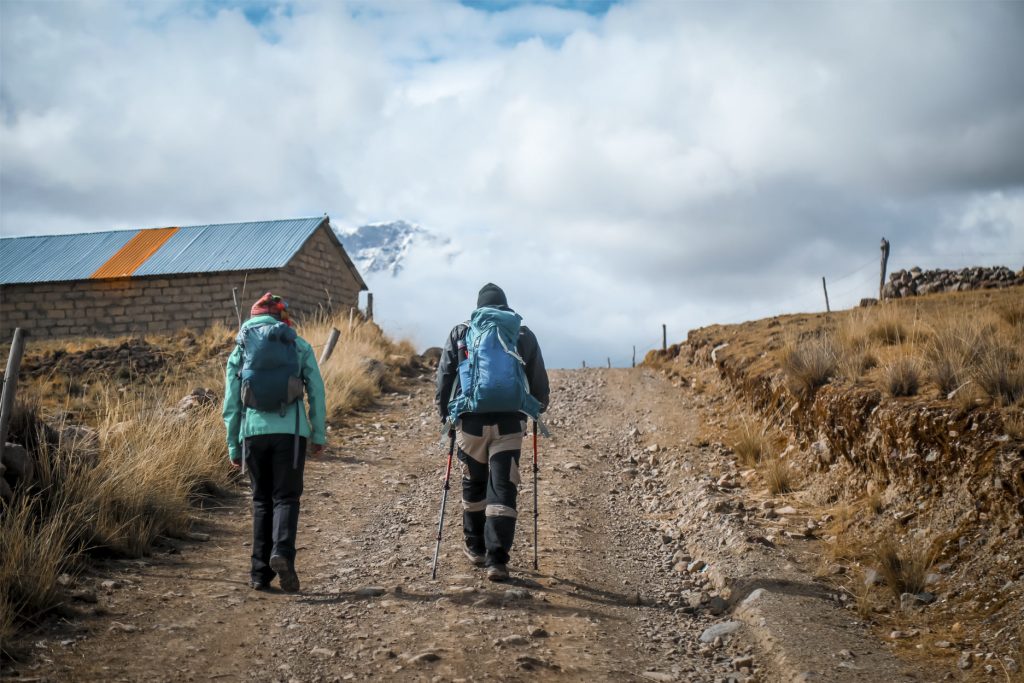
Wayna Ausangate
The Wayna Ausangate pass, located in the majestic Ausangate mountain range (Cusco, Peru), is a high-altitude trekking destination that blends glacier landscapes, turquoise lagoons, and a deep connection with Andean culture. This route challenges adventurers at an elevation of over 5,000 meters while offering spectacular views of the snow-capped Ausangate (6,384 meters), considered an Apu (sacred deity) in Inca cosmology.
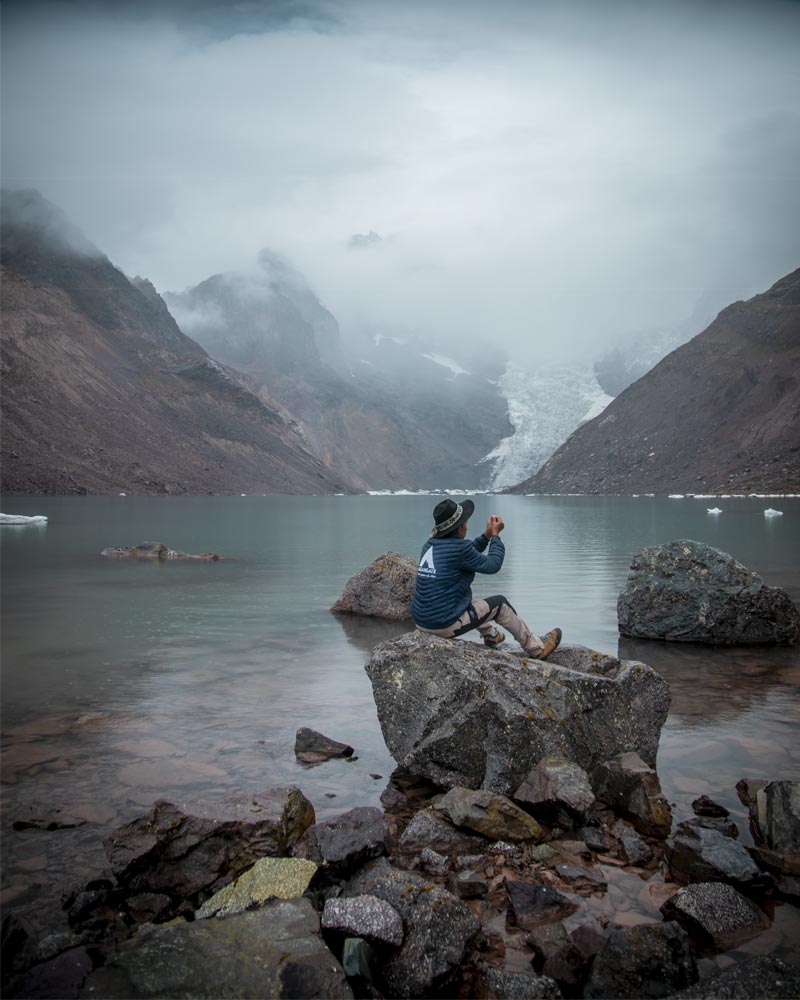
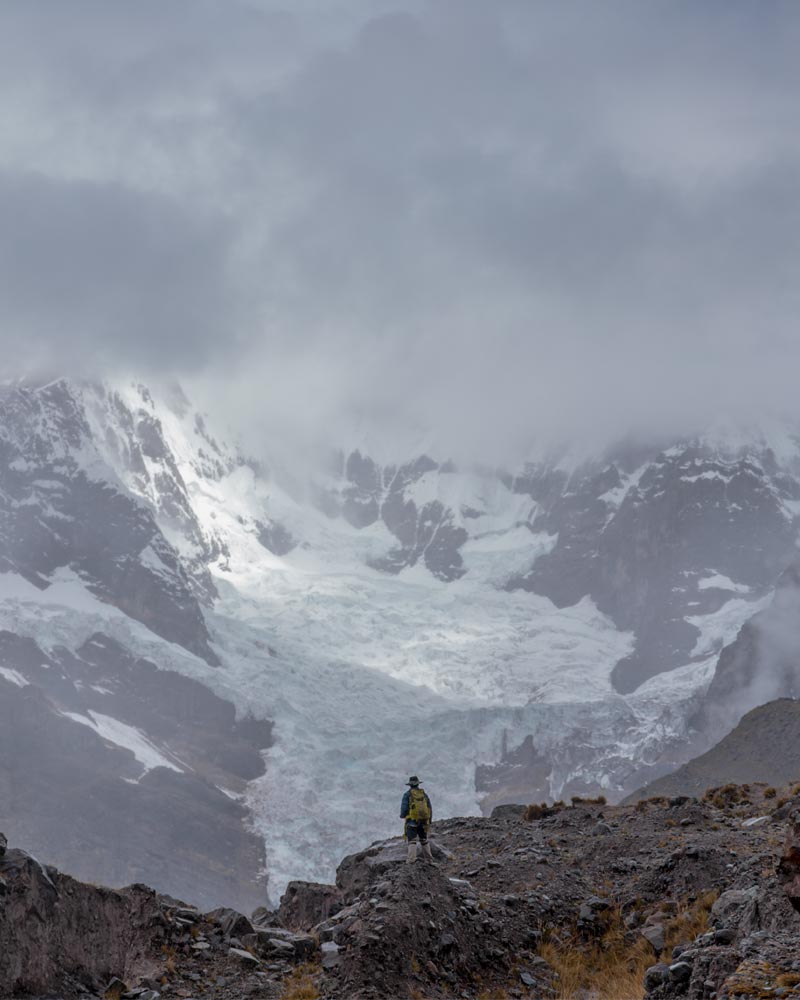
Arapa Pass
In the majestic Vilcanota mountain range, at an altitude of 4,850 meters, Abra Arapa is one of the most spectacular passes on the famous Ausangate Trek. This breathtaking natural landmark offers surreal views: intensely turquoise lagoons, permanent snow-capped peaks, and vast high-Andean plains that take your breath away. Ideal for trekking, photography, and adventure, this still relatively untouched destination attracts travelers seeking authenticity, pristine landscapes, and a deep connection with Andean nature. Its proximity to the sacred Ausangate makes it a key stop for those looking to explore the most epic corners of Cusco.
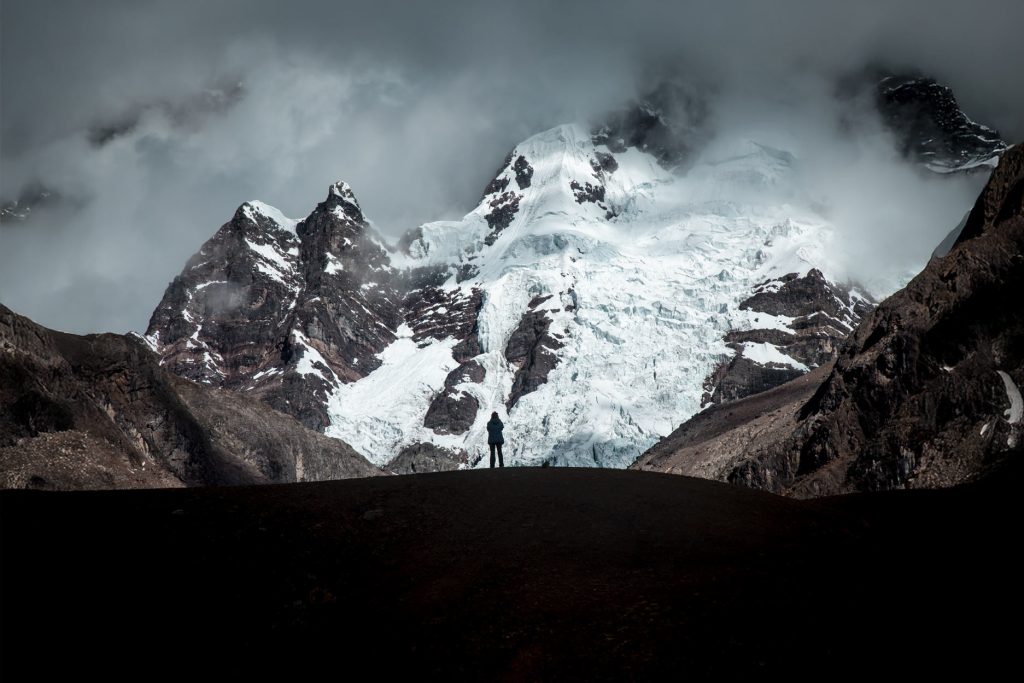
Hatun Pukaqocha or Jatun Pucacocha
Nestled in the heart of the Vilcanota Mountain Range, at the foot of the sacred Ausangate, lies Jatun Pucacocha, a stunning Andean lagoon that blends mysticism, biodiversity, and surreal landscapes. Spanning 0.9 kilometers in length, its reddish waters (Quechua name: “Great Red Lagoon”) create a mesmerizing and unique natural wonder.
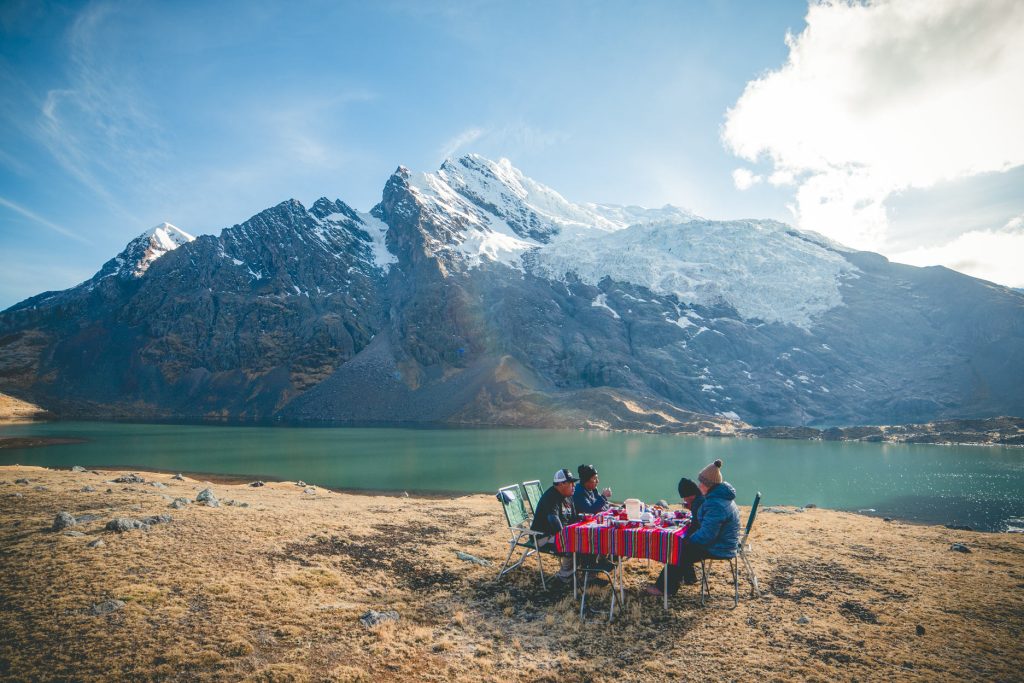
Puka Pass or Apacheta Pass
Located in the Cusco region of Peru, Abra Puka is a stunning mountain pass that offers panoramic views of Andean landscapes. It blends natural richness, Inca culture, and adventure. Perfect for trekking and photography, this emerging destination attracts travelers seeking authentic experiences away from traditional routes.
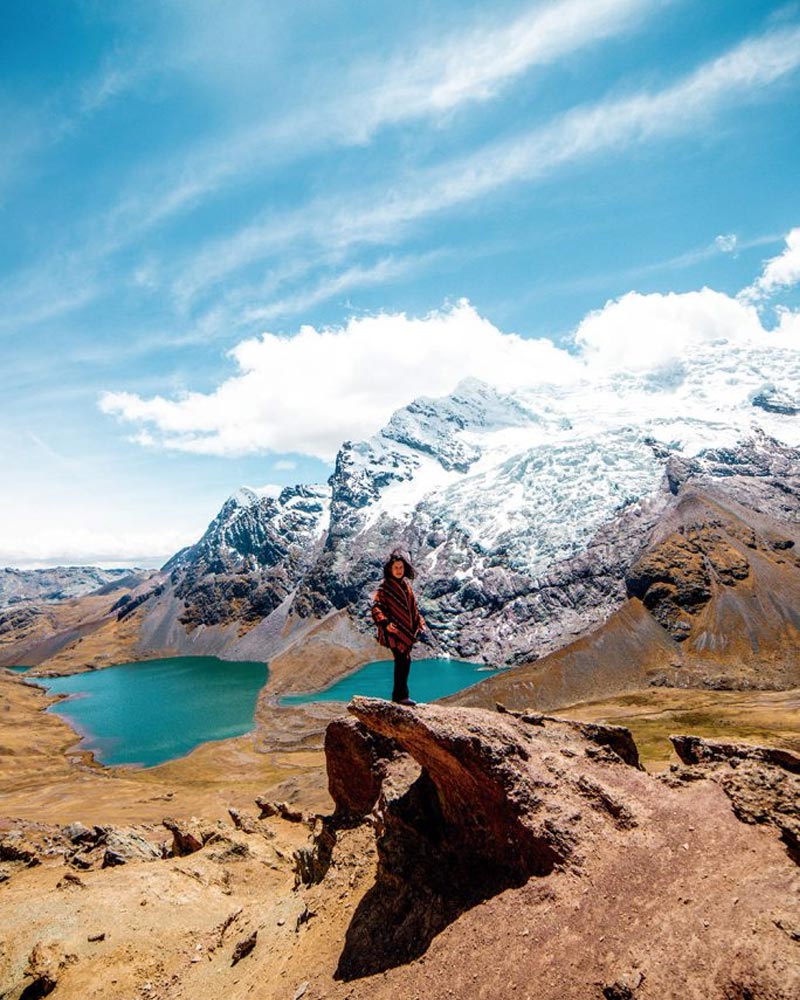
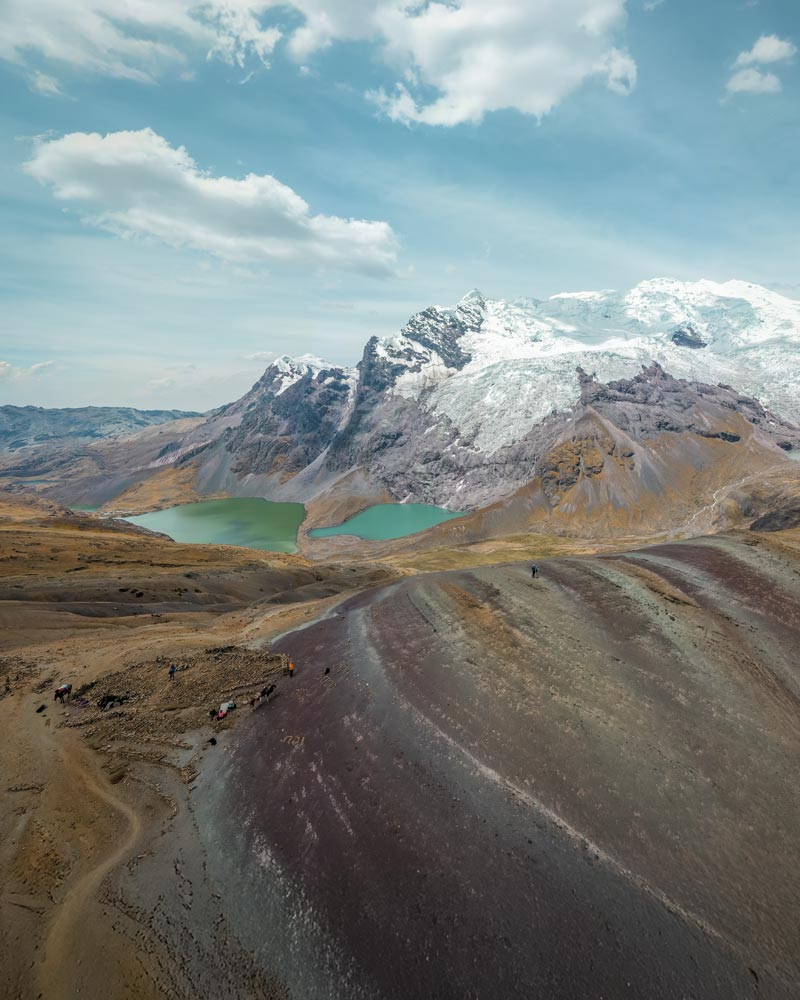
Surineqocha Lagoon
Along the route to the Rainbow Mountain (Vinicunca) in Cusco, Peru, Surineqocha Lagoon is a must-visit destination for nature lovers and those interested in Andean culture. Set amidst the majestic mountains of Cusco, this crystal-clear lagoon reflects the sky and is surrounded by towering snow-capped peaks, offering a serene and photographic experience. Its name, derived from Quechua, evokes its ancestral connection to Inca traditions, making it an ideal spot for sustainable tourism, trekking, and spiritual connection.
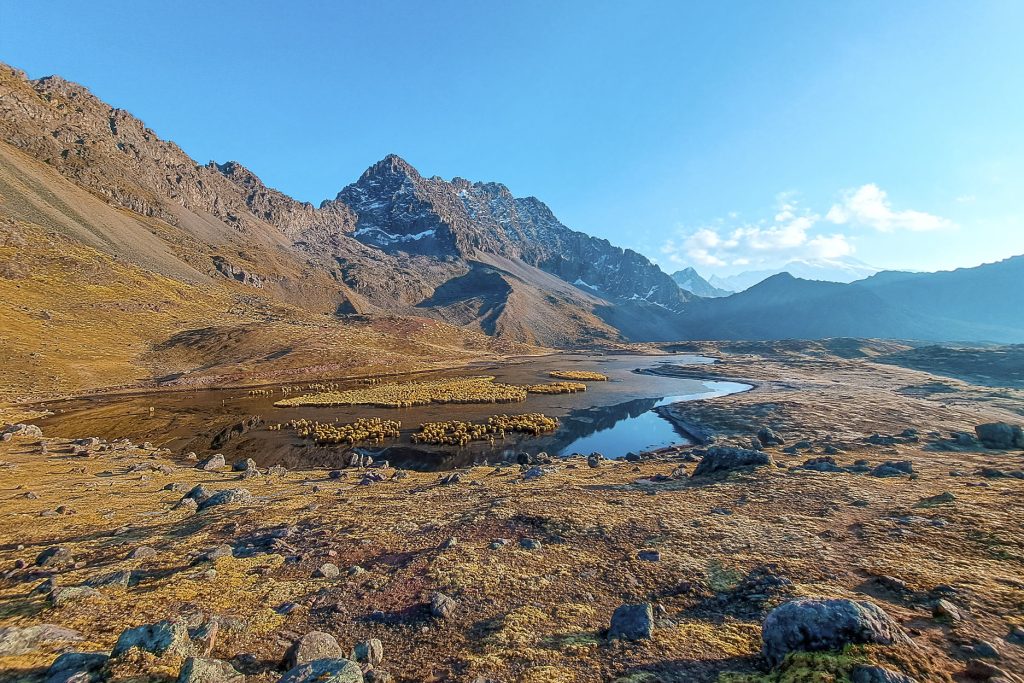
Rainbow Mountain
Rainbow Mountain (Vinicunca), located in Cusco, Peru, is a breathtaking natural phenomenon and one of the most viral tourist destinations worldwide. It is renowned for its vibrant bands of natural colors created by unique minerals on its slopes. Situated at over 5,200 meters above sea level, this Andean gem blends geological beauty, Inca mysticism, and extreme adventure, attracting travelers and content creators seeking one-of-a-kind landscapes.
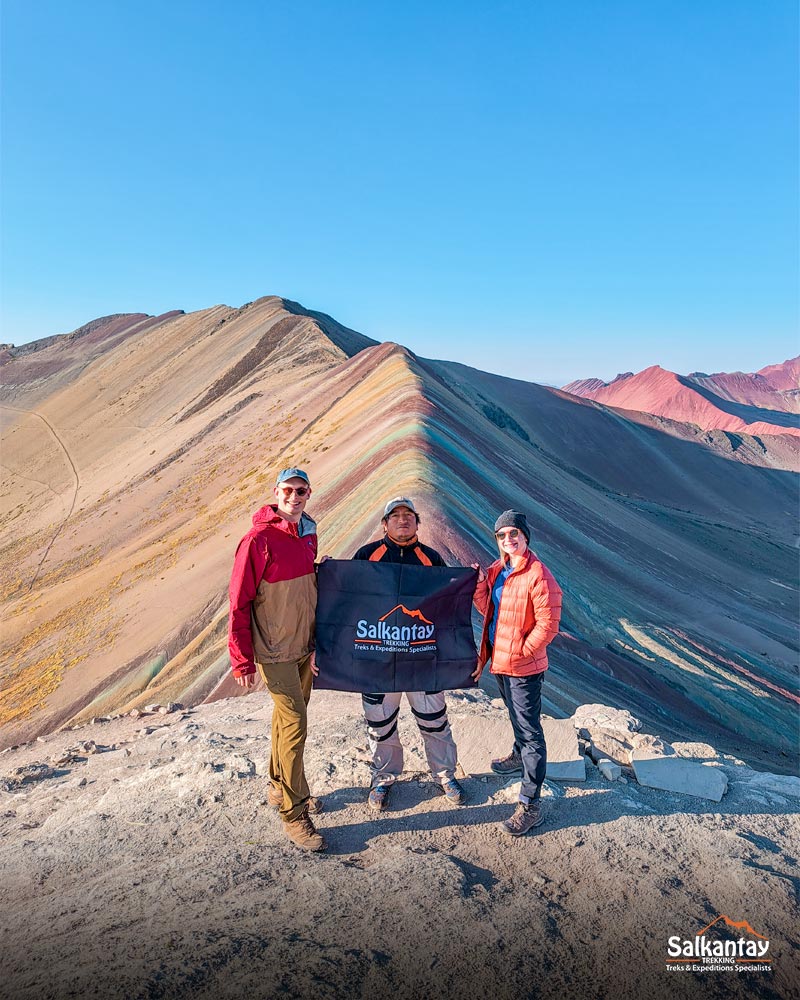

Red Valley
Red Valley, or the Red Canyon of the Andes, is a must-visit destination for nature lovers and adventure seekers. It is famous for its stunning geological formations in red hues and its surreal landscape that rivals the iconic Vinicunca (Rainbow Mountain), which is located near this famous site. The Rainbow Mountain rises over 4,900 meters above sea level. The Andean paradise offers a unique experience with its rainbow mountains, breathtaking viewpoints, and accessible trekking routes, making it perfect for those looking to escape the crowds.
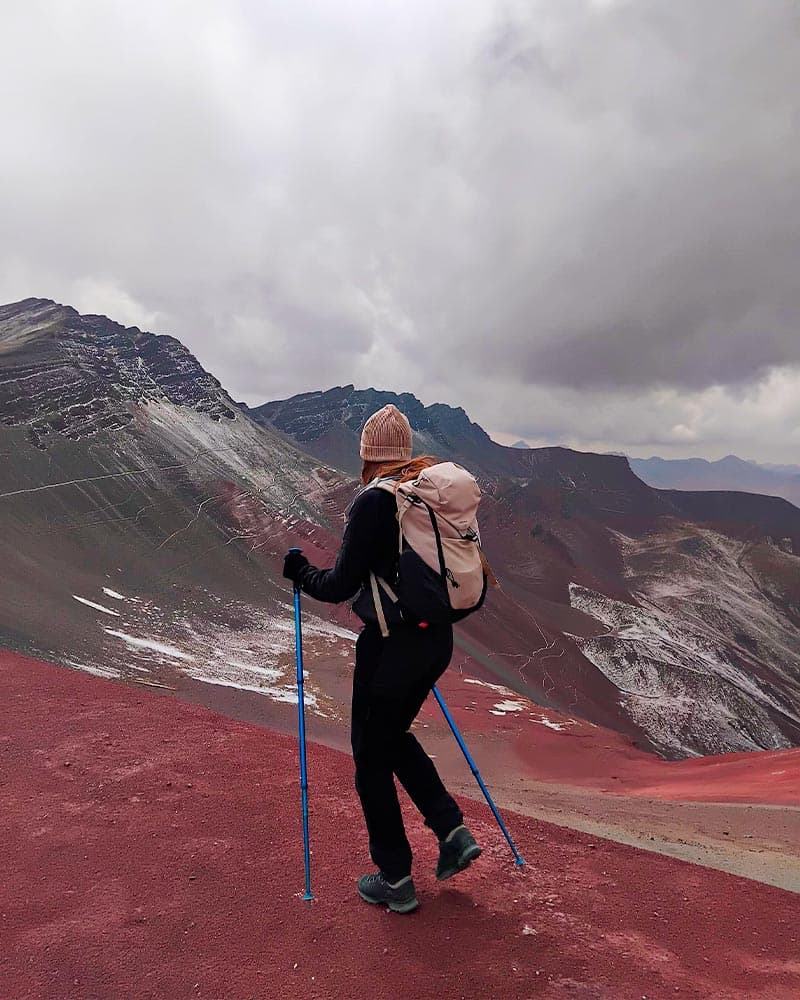
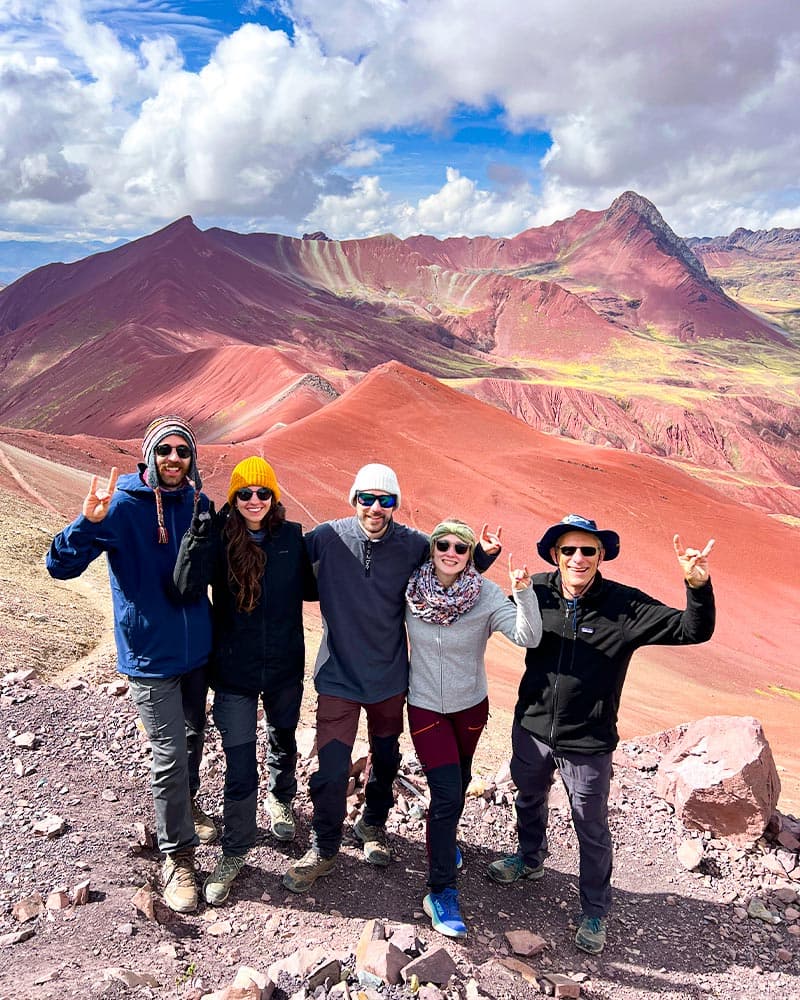
The Spirit of Machu Picchu: Ausangate + Rainbow Mountain + Machu Picchu
Immerse yourself in the best of Peru with this epic one-week tour, designed to explore the most iconic destinations: from the mystical City Tour in Cusco and the fascinating Sacred Valley of the Incas to the awe-inspiring Machu Picchu (one of the New Seven Wonders of the World and a UNESCO World Heritage Site), culminating with the majestic Rainbow Mountain (Vinicunca) and the sacred Apu Ausangate. Discover ancient cultures, marvel at the Andean biodiversity, and witness some of the most spectacular landscapes on Earth. This adventure combines history, nature, and adrenaline in one unforgettable journey, perfect for solo travelers, couples, or groups. The Spirit of Machu Picchu awaits!
Can you combine Ausangate, Rainbow Mountain, and Machu Picchu?
Yes, you can! Combining Ausangate, Rainbow Mountain (Vinicunca), and Machu Picchu is an unforgettable experience many travelers already enjoy. While these destinations lie in different parts of the Cusco region, you can visit all three in one trip with proper planning.
Why choose the Ausangate + Rainbow Mountain + Machu Picchu route?
Choosing this tour means opting for one of the most epic routes in Peru. This journey combines the best of adventure tourism, ecotourism, and Peru’s cultural heritage. It’s perfect for solo travelers, couples, or groups seeking a transformative experience.
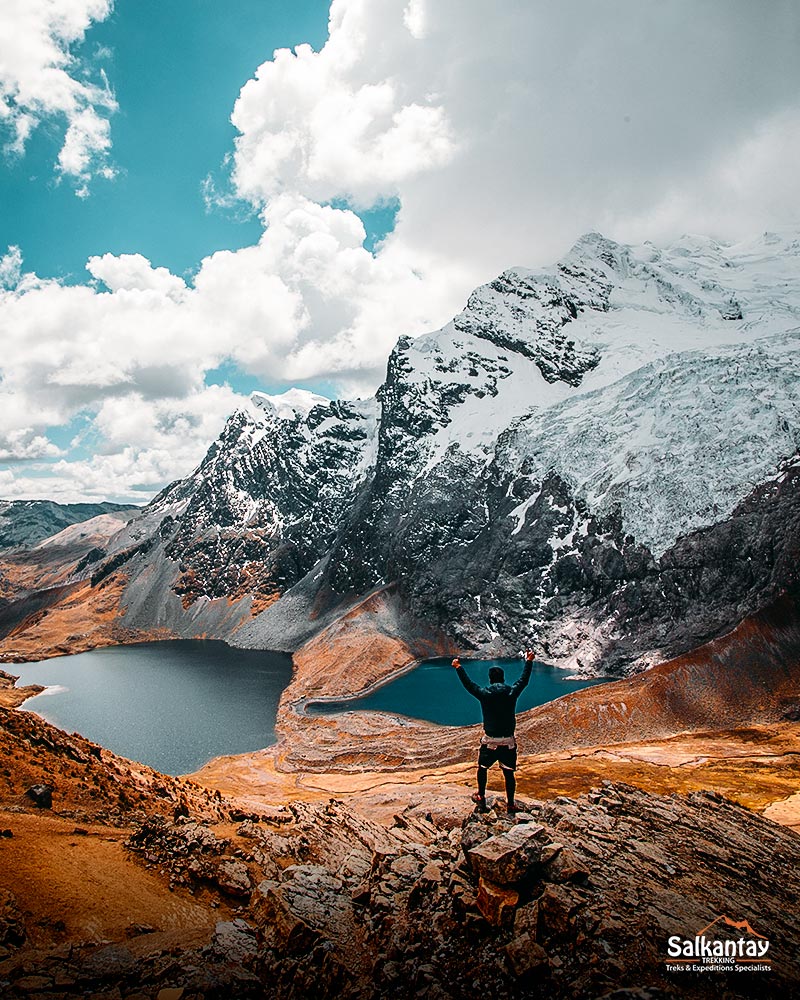
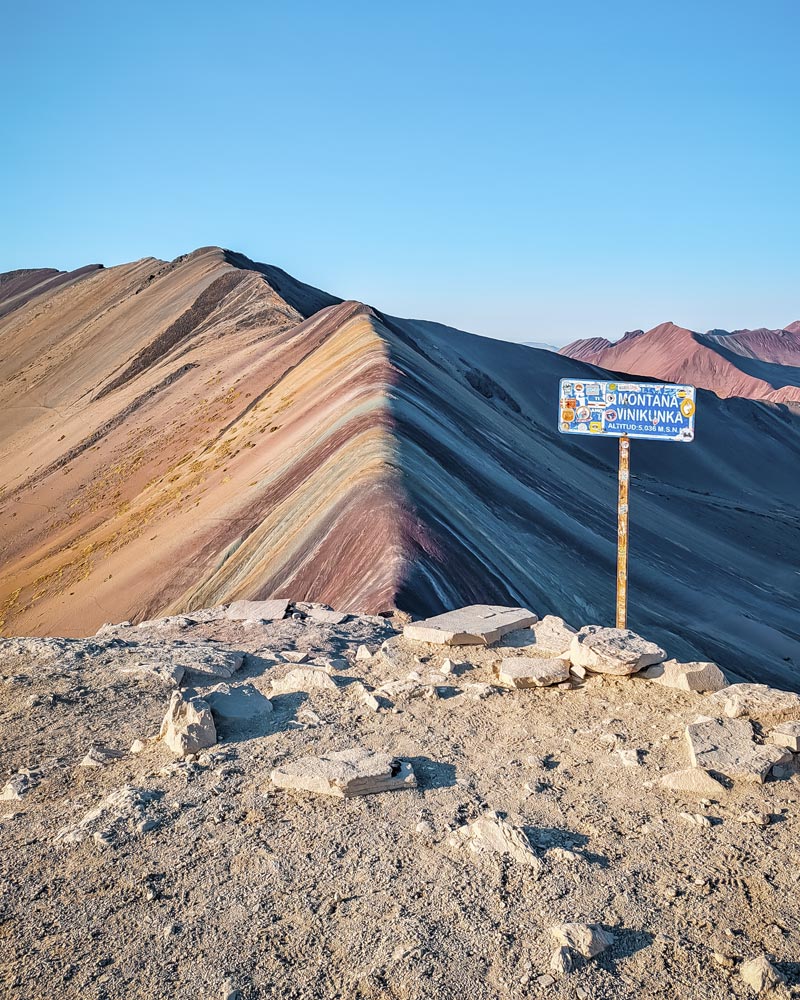
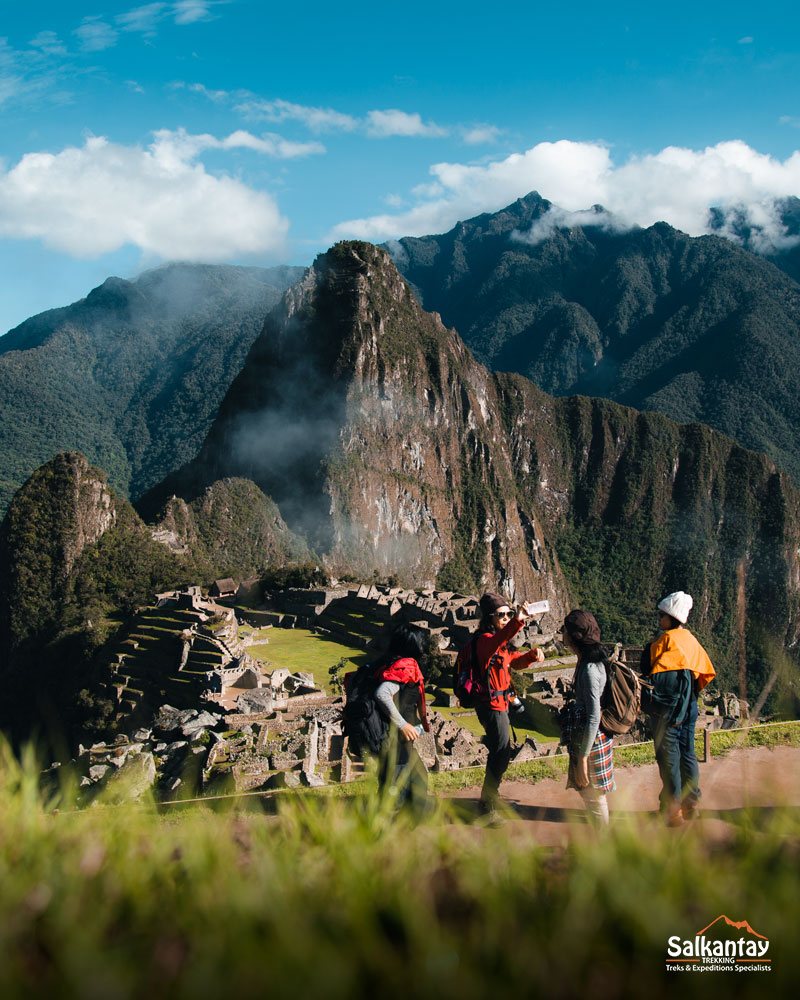
The Best of Each Day on the Journey: Machu Picchu + Sacred Valley + Rainbow Mountain
- Day 1: Cusco City Tour – Discover the Capital of the Inca Empire
Explore Cusco’s iconic historical landmarks, including the Plaza de Armas, Sacsayhuamán, Qenqo, and Tambomachay. This half-day tour is perfect for acclimatizing while immersing yourself in the rich legacy of the Incas. Ideal for travelers who crave culture, history, and stunning views! - Day 2: Sacred Valley – Moray, Maras Salt Mines & Ollantaytambo
Uncover the mysteries of Moray’s circular terraces, the dazzling salt pools of Maras, and the ancient Inca stronghold of Ollantaytambo. End your day with a scenic train ride to Aguas Calientes, the gateway to Machu Picchu. - Día 3: Machu Picchu – Wonder of the Modern World
Experience the magic of Machu Picchu at sunrise with a guided tour through its sacred temples and iconic terraces. Optional: Hike to Huayna Picchu for breathtaking panoramic views. A bucket-list moment in Perú! - Day 4: Ausangate Trek – Upis and Pucacocha Lagoon
Begin your Andean adventure with a trek to Upis, Arapa Pass, and Pucacocha Lagoon. Soak in natural hot springs, marvel at glacial landscapes, and walk beneath the watchful presence of the sacred Apu Ausangate. - Day 5: Ausangate Trek – Warmisaya Pass and Surinecocha
Reach the stunning Warmisaya Pass (4,985 m / 16,355 ft) with sweeping views of Ausangate and its turquoise lakes—camp near Surinecocha, where the sunset will leave you speechless. - Day 6: Rainbow Mountain – Vinicunca
Hike to the iconic Rainbow Mountain (5,100 m / 16,732 ft), a natural wonder of colorful mineral layers. Arrive early to beat the crowds and capture the mountain’s most vivid hues at sunrise. - Day 7: Farewell Cusco – End of an Unforgettable Adventure
Transfer to the airport or bus terminal. On this journey, you will take home unforgettable memories of Cusco, Machu Picchu, and Rainbow Mountain.
Tips for Your Epic Adventure
- Book Machu Picchu months in advance, especially if you plan to hike Huayna Picchu, as tickets are limited and sell out quickly.
- Train for the Ausangate and Rainbow Mountain treks: Prepare your body with physical conditioning beforehand, wear non-slip hiking shoes, and bring trekking poles for stability.
- Stay hydrated and protect yourself from the sun: Drink 3–4 liters daily and use SPF 50+ sunscreen. The Andean sun is intense, even on cloudy days.
- Bonus tip: Carry cash in soles and don’t miss trying lomo saltado, a delicious Peruvian classic!
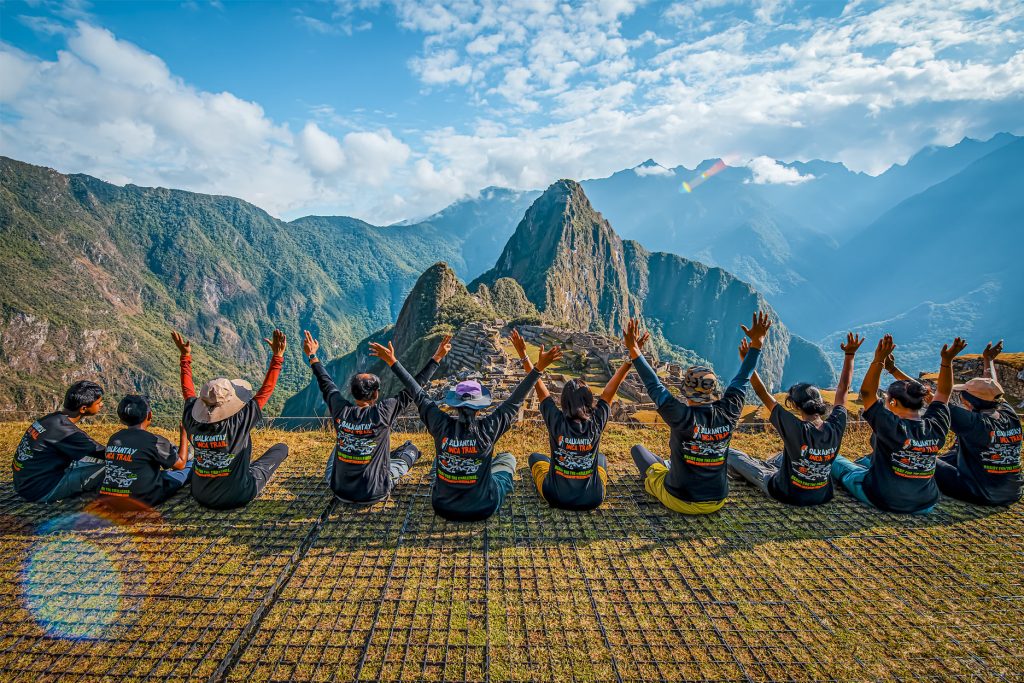
When Is the Best Time to Hike the Ausangate Trek?
The best time to hike the Ausangate Trek is during the dry season, from May to September, when the weather is more stable, the skies are clear, and trail conditions are ideal for high-altitude trekking. These months offer the most breathtaking views of snow-capped peaks, turquoise lakes, and rugged Andean landscapes, perfect for photography and immersive adventure.
Weather Conditions on the Ausangate Trek
The weather on the Ausangate Trek is highly unpredictable due to its extreme altitude in the Peruvian Andes. Here’s a detailed breakdown by season to help you choose the best time for your high-altitude adventure:
Dry Season (April – October)
- Daytime temperatures: 10°C to 20°C (50°F to 68°F).
- Cold nights: Often drop below freezing, especially at high-altitude camps.
- Conditions: Sunny skies, strong winds at mountain passes, occasional light showers
- Why go: This is the best season for trekking clear skies, stunning views, and safer trails
Rainy Season (November – March)
- Frequent rainfall: Especially in January and February, the wettest months
- Some sunny breaks, but temperatures can shift rapidly
- Fewer tourists: Great for solitude and off-peak experiences
- Challenging trails: Mud, slippery paths, and occasional snowfall increase difficulty
Temperatures on the Ausangate Trail
- Sunny days: 10°C – 20°C (50°F – 68°F)
- Cloudy days: 5°C – 10°C (41°F – 50°F)
- Nights: Often drop below 0°C (32°F), particularly at higher elevations
When Should You Go?
- Best weather & photography: April – October (ideal for trekking safely with great visibility)
- Fewer crowds & more adventure: January – February (expect tough conditions but peaceful trails)
Tip: Travel during the dry season if you’re after the best weather and photo opportunities. But if you prefer solitude and don’t mind muddy trails or braving the elements, the rainy season offers a more adventurous and uncrowded experience.
Is the Ausangate Trek Difficult?
The Ausangate Trek is one of Peru’s most challenging yet rewarding high-altitude hikes, best suited for experienced trekkers. With mountain passes over 5,000 meters and rugged terrain, it requires solid physical preparation and acclimatization. However, the breathtaking views of glaciers, turquoise lakes, and remote Andean landscapes make the effort worthwhile for those seeking a once-in-a-lifetime adventure.
How to Prepare for the Ausangate Trek?
Before embarking on the Ausangate Trek, acclimate appropriately to the high altitude in Cusco. Spend at least two to three days adjusting to the elevation to reduce the risk of altitude sickness. Dress in warm, waterproof layers to stay protected from sudden weather changes, and pack your backpack with all the essentials: first aid kit, sunscreen, water, and other hiking necessities. Being well-prepared ensures a safer, more enjoyable experience in one of Peru’s most breathtaking highland routes.
- Acclimatization: Acclimatization is crucial to prevent altitude sickness. Arrive in Cusco (11,150 ft / 3,400 m) at least 2–3 days before your trek to allow your body time to adjust. Use this time to explore with short hikes to places like Humantay Lake or Rainbow Mountain. Stay hydrated, avoid alcohol, and drink coca tea, traditional remedies that support a smoother adaptation to high-altitude conditions.
- Physical Fitness: The Ausangate Trek demands strong physical endurance. Train 2–3 months in advance with uphill hikes, running, or cycling to build cardiovascular strength. Incorporate strength exercises targeting your legs, back, and core (the muscles that stabilize your body, including the abdominals, lower back, pelvis, and glutes) to ensure you can handle long days with a heavy backpack.
- Essential Gear: Packing the right gear is critical for extreme climates. Bring thermal and waterproof clothing, broken-in boots, a -10°C sleeping bag, trekking poles, and high-SPF sunscreen. Proper equipment makes all the difference when facing heavy rain, hail, and subzero temperatures, ensuring safety, comfort, and peak performance in the most challenging conditions.
- Nutrition & Hydration: Drink 3 liters of water daily and pack high-energy snacks like nuts and granola bars. On guided tours, meals typically include carb-rich dishes and hot soups to replenish energy and combat the cold. Proper nutrition and hydration are key to endurance in harsh environments.
- Logistics: The best time to go is from May to September (dry season with minimal rainfall). Choose a guided tour (ideal for beginners) or venture solo (requires experience and full gear). The journey begins in Tinki, a 3-4 hour drive from Cusco, the gateway to adventure.
- Classic Trek Itinerary (5-7 days): This iconic route takes you through stunning turquoise lagoons, challenging Ausangate Pass (5,200m), and overnight stays at picturesque campsites like Upis and Pacchanta. Reward your efforts with a soak in Pacchanta’s rejuvenating hot springs, the perfect finale to an epic Andean journey.
- Pro Tips: Bring cash (ATMs are unavailable), hire local arrieros (pack animal handlers) for gear assistance, and honor Quechua traditions. Remember, Ausangate is a sacred mountain.
- Essential Safety Alert: You must prepare for acute altitude sickness, unpredictable mountain weather, and route-finding challenges. If you experience severe altitude symptoms (headache, nausea, dizziness), descend immediately without delay. Always carry GPS navigation and stick to marked trails to avoid disorientation in this remote wilderness.
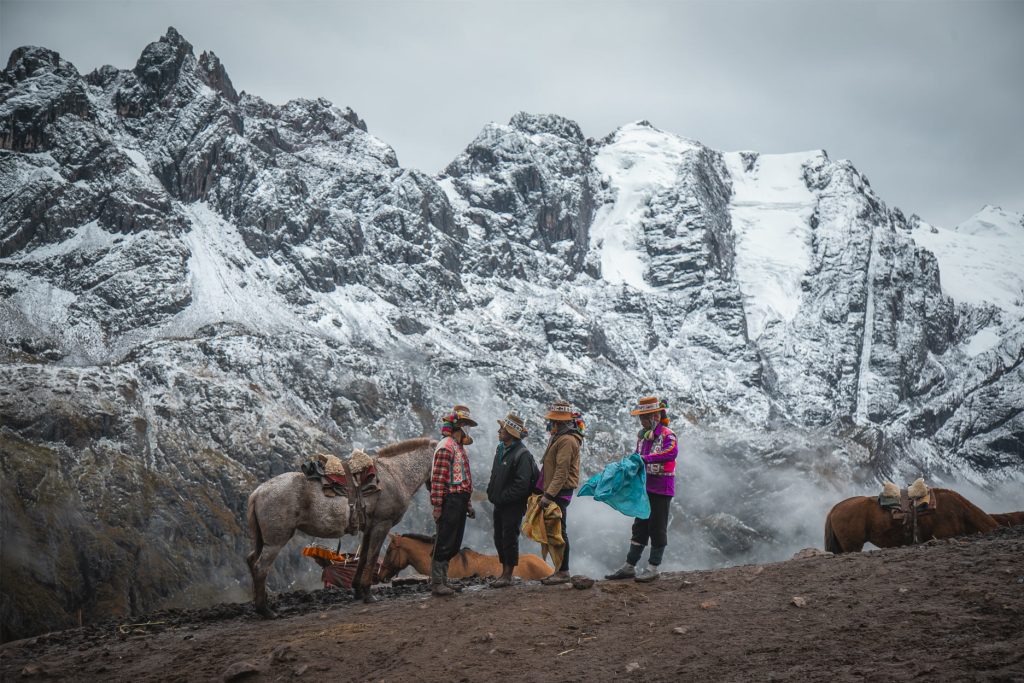
Essential Equipment for the Ausangate Trek?
The Ausangate Trek is a challenging high-altitude adventure that demands proper preparation to conquer its rugged terrain and unpredictable weather. To fully enjoy this transformative Andean experience, you’ll need:
- Sturdy hiking boots: Vital for rocky trails and uneven paths.
- Layered clothing system: Moisture-wicking base + insulated mid-layer + waterproof shell.
- High-altitude sun protection: SPF 50+, UV-blocking sunglasses, and a wide-brim hat.
- Ergonomic backpack: With hip support for multi-day comfort.
- Trekking poles: Reduce knee impact by 25% on steep descents
- Suitable sleeping bag: Designed for low temperatures in the mountains.
Conclusion:
Ausangate is not just a mountain; it’s an ancient bridge between the physical and spiritual worlds of the Andes, where its glaciers whisper tales of gods and shepherds. Far from mass tourism, its trekking routes preserve an authenticity that is now rare in destinations like Machu Picchu, offering a unique experience where every step becomes a dialogue with nature and a lesson in resilience from the Ausangate communities. Suppose you seek a genuine adventure immersed in breathtaking beauty and unparalleled cultural heritage, choosing Ausangate with us. In that case, the leaders in personalized expeditions are the ultimate way to embark on a transformative journey in the heart of the Andes. We guarantee an authentic, exclusive, and tailor-made experience crafted to exceed your expectations.

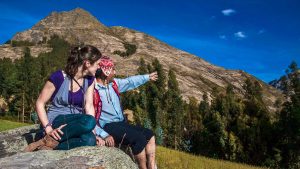

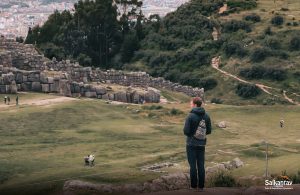
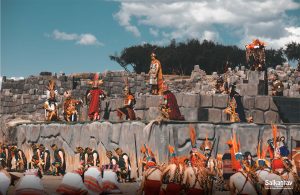
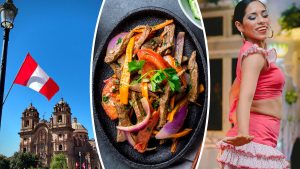
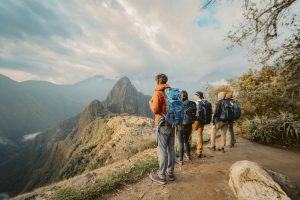



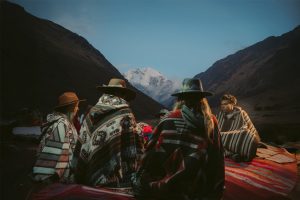
Leave A Reply